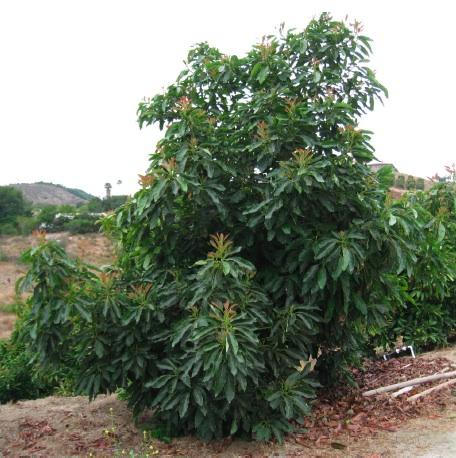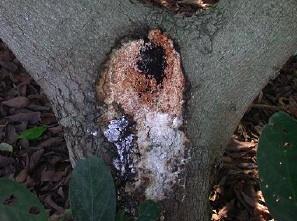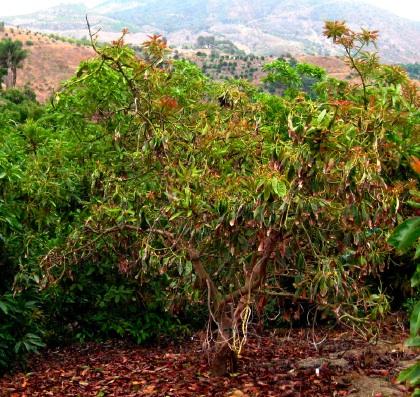Healthy avocado roots play an important role in producing consistent high-quality avocado crops from healthy avocado trees. Roots provide nutrients and water for strong healthy leaves, good shoot growth, flowering and fruit set, and avocado fruit growth. Without healthy roots, avocado trees grow poorly with small leaves, are susceptible to pests and diseases, and produce poor crops of small fruit.
Indicators of poor avocado root health (all or some of these may apply):
- Unhealthy canopy with small leaves starting to turn green-yellow or yellow
- Fewer and fewer leaves on the tree
- Small branches die back leading to “skeletal trees”
- Trees stunted in size and failing to thrive
- Obvious disease symptoms like dead, brown, and wilted leaves
- Poor crops of small fruit
- Feeder roots grow only in a small area under the tree and often look diseased
- Surface water stays for a long time near avocado trees after rain or irrigation
- Soil seems to be constantly wet
- Topsoil is in a thin layer low in organic matter
Causes of Poor Avocado Root Health
Wet Feet
- Avocado roots die if continuously wet
- Wet soils also encourage diseases to grow and spread
- Avocado tree roots need free draining soils that provide them with a good supply of air
Disease
- Phytophthora cinnamomi - destroys feeder roots and if left untreated it can kill trees whose soil is wet and poorly drained
- Phytophthora mengei - forms a canker or collar rot in wet soils and usually kills the trees by ring barking
- Armillaria root rot - infects the roots, leading to a slow or sudden decline with mushrooms produced at the base of the tree
- Verticillium wilt - is commonly a sudden die off of one part of the tree with leaves that remain attached turning brown
Treatment Damage
- Concentrated phosphorous acid used for root rot treatment causes a weeping canker at the site of treatment
- Optimal avocado tree root health is achieved using some of the below integrated grove management techniques
Cultural Management for Avocado Root Health
Following is a list of cultural management practices that can help California avocado growers maintain healthy root systems in their avocado groves.
Improve soil drainage
- Break up compacted soil and use mounds, ridges, berms or drains to reduce wet areas
- Divert excess water flow with drains or channels to slow the spread of root rot
Monitor irrigation
- Avocado trees don’t search for water and almost all feeder roots are in the top 6-8” of soil, making it critical to provide the right amount of water at the right times
- Do not over water — too much water can encourage root rot fungus to attack the feeder roots
- Water the avocado trees when 12” tensiometers read 25-30 centibars for average soil. For sandy soils, water earlier. For clay soils, water later.
- The California Irrigation Management Information System (CIMIS) is a great resource to calculate daily water use.
- Root health is easier to manage with clean, salt-free water
Improve avocado grove hygiene
- Don’t bring disease to the grove, plant only healthy trees
- Don’t spread disease — root rot can be spread by infested soil on shoes, machinery, and rodents; in drainage water; by poor harvesting practices
- Put up barriers to the advance of root rot, using copper fungicides foot baths
- Apply needed cultural management practices
- Apply gypsum as it contains calcium that can inhibit root rot and help strengthen the cell wall of the root
- Use mulch to increase the organic matter in the soil and to improve soil biology that helps suppress diseases
- Increase avocado tree root rot resistance and recovery by managing nutrition
- Reduce tree stress by pruning to create a better balance between the canopy and root system
- Plant tolerant rootstocks that grow better when challenged by root rot
Chemical control
- Use registered fungicide products for acute and chronic diseases


